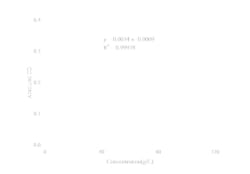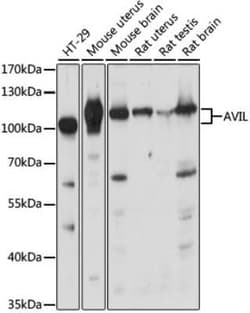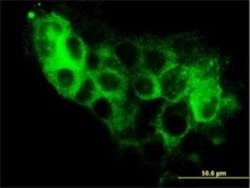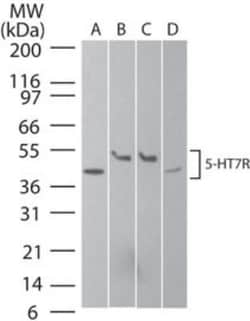UserName

Bio Techne
Bio-Techne is a global developer, manufacturer, and supplier of high-quality reagents, analytical instruments, and precision diagnostics. Whether you’re at the cutting edge of academic research, translating basic discoveries into therapeutic leads, or at a facility that requires the highest level of diagnostic testing, our award-winning tools and solutions empower scientists and clinicians to achieve reproducible and consistent results. Choosing Bio‑Techne means having confidence that every solution you use will help move you towards better answers.
- About
- Announcement
- All Products
- Special Offers
Top Categories
Related Resources
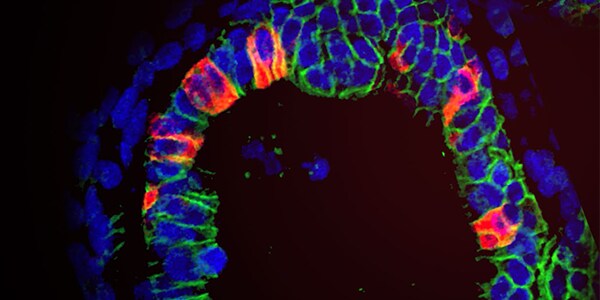
Optimizing Organoid Culture Conditions
- Nome file
- 23227_bio_techne_optimizing_organoids_Fisherised_v2.pdf
- Dimensione
- 1 MB
- Formato
- application/pdf

Realize Your Protein and Cell Potential
- Nome file
- 23227_bio_techne_realize_protein_Fisherised.pdf
- Dimensione
- 3 MB
- Formato
- application/pdf

Organ-on-a-Chip Technology
- Nome file
- 23227_bio_techne_organ_on_a_chip_technology_progress_Fisherised.pdf
- Dimensione
- 326 KB
- Formato
- application/pdf
Fisher Scientific Europe Announces a New Distribution Agreement with Bio-Techne in Europe
Paris, France 01-05-2024
Thermo Fisher Scientific, a leading provider of laboratory products and services, is pleased to announce a significant milestone in its commitment to providing cutting-edge solutions to its customers. Effective May 1, 2024, Thermo Fisher will enter into a strategic European distribution agreement with Bio-Techne (NASDAQ: TECH), a global life sciences company providing innovative tools and bioactive reagents for the research and clinical diagnostic communities.
This partnership marks an important collaboration between two industry leaders in the fields of scientific research, diagnostics, and biotechnology. Under this agreement, Thermo Fisher, through the Fisher Scientific channel, Europe, will distribute Bio-Techne's extensive portfolio of innovative products, including antibodies, proteins, immunoassay kits, reagents and enzymes to laboratories and research institutions across Europe.
"We are thrilled to forge this partnership with Bio-Techne, a company renowned for its pioneering advancements in the life sciences industry," said Claire Wallace, President, Fisher Scientific channel, Europe. "By adding Bio-Techne's high-quality products to our comprehensive portfolio, we aim to further empower scientists and researchers with the tools they need to drive breakthrough discoveries and advancements in healthcare."
Bio-Techne's state-of-the-art products are designed to accelerate research and improve outcomes in areas including cell and gene therapy, immunology, neuroscience, and more. With this collaboration, Thermo Fisher reinforces its commitment to providing customers with access to the latest technologies and expertise, ultimately advancing scientific knowledge and improving human health.
"We are excited to partner with Thermo Fisher to expand the reach of our products and services throughout Europe," said Kim Kelderman, Bio-Techne’s President and Chief Executive Officer. "By leveraging the Fisher Scientific Channel's extensive European distribution network and industry expertise, we aim to enhance support for researchers and accelerate scientific discoveries that address some of the most pressing challenges in healthcare today."
This distribution agreement underscores Thermo Fisher's dedication to fostering innovation and collaboration within the scientific community. Through strategic partnerships with leading companies like Bio-Techne, Thermo Fisher continues to strengthen its position as a trusted partner for researchers and laboratories across Europe.
About Bio-Techne
Bio-Techne Corporation (NASDAQ: TECH) is a global life sciences company providing innovative tools and bioactive reagents for the research and clinical diagnostic communities. Bio-Techne products assist scientific investigations into biological processes and the nature and progress of specific diseases. They aid in drug discovery efforts and provide the means for accurate clinical tests and diagnoses. With thousands of products in its portfolio, Bio-Techne generated over $1.1 billion in net sales in fiscal year 2023 and has approximately 3,100 employees worldwide.
Questions? Reach Out to a Specialist >
| ID gene (immissione) | 2572 |
|---|---|
| Specie ospite | Human |
| Content And Storage | Store at -20°C in powder form. Store at -80°C once reconstituted. |
| Immunogeno | GAD65 |
| N. accesso geni | Q05329 |
| Target Species | Human |
| Applicazioni | Flow Cytometry,ELISA,Functional Assay |
| Coniugato | Unconjugated |
| Classificazione | Monoclonal |
| Alias gene | EC 4.1.1, EC 4.1.1.15, GAD-65, GAD65MGC161605, glutamate decarboxylase 2, glutamate decarboxylase 2 (pancreatic islets and brain, 65kD), glutamate decarboxylase 2 (pancreatic islets and brain, 65kDa), Glutamate decarboxylase 65 kDa isoform, Glutamate decarboxylase-2 (pancreas), MGC161607,65 kDa glutamic acid decarboxylase |
| Isotype | IgG1 |
| Ricostituzione | Reconstitute with sterile, distilled water to a final concentration of 1 mg/mL. Gently shake to solubilize completely. Do not vortex. |
| Forma | Purified |
| Antigene | GAD2/GAD65 |
| Metodo di purificazione | Protein A purified |
| Status giuridico | RUO |
| Formulazione | Lyophilized from 25mM histidine, 8% sucrose, 0.01% Tween80 (pH6.2) |
| Disciplina di ricerca | Diabetes Research, Immune System Diseases, Immunology, Lipid and Metabolism, Neuronal Cell Markers, Neuroscience |
| Primario o secondario | Primary |
| Clone | U.Washington patent anti-GAD65 |
Factor VIII Antibody - BSA Free, Novus Biologicals™
Rabbit Polyclonal Antibody has been used in 4 publications
| Specie ospite | Rabbit |
|---|---|
| Immunogeno | A synthetic peptide made to a C-terminal portion of human Factor VIII (between amino acids 2100-2250) [UniProt P00451] |
| Target Species | Mouse,Rat |
| Applicazioni | Western Blot,Immunofluorescence,Immunohistochemistry (Paraffin) |
| Antigene | Factor VIII |
| Metodo di purificazione | Affinity Purified |
| Simboli geni | F8 |
| Status giuridico | RUO |
| ID gene (immissione) | 55666 |
|---|---|
| Specie ospite | Rabbit |
| Content And Storage | Store at 4C short term. Aliquot and store at -20C long term. Avoid freeze-thaw cycles. |
| Immunogeno | This antibody was developed against Recombinant Protein corresponding to amino acids:VRDECLLPCKDAPELGYAKESSSEQYVPDVFYKDVDKFGNEITQLARPLPVEYLIIDITTTFPKDPVYTFSISQNPFPIENRDVLGETQDFHSLATYLSQNTSSVFLDTISDFHLLLFLVTNE |
| Target Species | Human,Mouse,Rat |
| Applicazioni | Western Blot,Immunohistochemistry,Immunocytochemistry,Immunofluorescence,Immunohistochemistry (Paraffin) |
| Coniugato | Unconjugated |
| Classificazione | Polyclonal |
| Alias gene | FLJ20657, FLJ23742, KIAA1499nuclear protein localization protein 4 homolog, NPL4Protein NPL4, nuclear protein localization 4 homolog (S. cerevisiae) |
| Isotype | IgG |
| Test di specificità | Specificity of human NPLOC4 antibody verified on a Protein Array containing target protein plus 383 other non-specific proteins. |
| Antigene | NPLOC4 |
| Metodo di purificazione | Affinity Purified |
| Simboli geni | NPLOC4 |
| Status giuridico | RUO |
| Formulazione | PBS (pH 7.2) and 40% Glycerol with 0.02% Sodium Azide |
| Primario o secondario | Primary |
PGC1 alpha Antibody - BSA Free, Novus Biologicals™
Rabbit Polyclonal Antibody has been used in 156 publications
| ID gene (immissione) | 10891 |
|---|---|
| Specie ospite | Rabbit |
| Content And Storage | Store at 4C short term. Aliquot and store at -20C long term. Avoid freeze-thaw cycles. |
| Immunogeno | This PGC1 alpha Antibody was developed against a recombinant protein made to an internal portion of the human PGC-1 alpha protein (within residues 400-550). [Swiss-Prot# Q9UBK2]. |
| N. accesso geni | Q9UBK2 |
| Target Species | Human,Mouse,Rat,Pig,Goat,Hamster,Sheep,Squirrel |
| Applicazioni | Western Blot,ChIP Assay,Flow Cytometry,Immunohistochemistry,Immunocytochemistry,Immunoprecipitation |
| Coniugato | Unconjugated |
| Peso molecolare dell'antigene | 91 kDa |
| Classificazione | Polyclonal |
| Alias gene | LEM6, Ligand effect modulator 6, ligand effect modulator-6, L-PGC-1alpha, peroxisome proliferative activated receptor, gamma, coactivator 1, alpha, peroxisome proliferator-activated receptor gamma coactivator 1 alpha transcript variant B4-3ext, peroxisome proliferator-activated receptor gamma coactivator 1 alpha transcript variant B4-8a, peroxisome proliferator-activated receptor gamma coactivator 1 alpha transcript variant B5-NT, peroxisome proliferator-activated receptor gamma coactivator 1-alpha, peroxisome proliferator-activated receptor gamma, coactivator 1 alpha, PGC1, PGC-1(alpha), PGC1A, PGC-1-alpha, PGC1APGC-1(alpha), PGC1peroxisome proliferative activated receptor, gamma, coactivator 1, PGC-1v, PPAR gamma coactivator variant form, PPAR gamma coactivator-1, PPARgamma coactivator 1alpha, PPAR-gamma coactivator 1-alpha, PPARGC1, PPARGC-1-alpha |
| Isotype | IgG |
| Test di specificità | Human and Mouse. Squirrel reactivity reported in the scientific literature. Expected reactivity based on sequence identity: monkey (98%), equine (94%), canine (93%) and rat (88%). Rat reactivity reported in scientific literature (PMID: 22208735). |
| Antigene | PGC1 alpha |
| Metodo di purificazione | Affinity Purified |
| Simboli geni | PPARGC1A |
| Status giuridico | RUO |
| Formulazione | PBS with 0.02% Sodium Azide |
| Disciplina di ricerca | Cancer, Cholesterol Metabolism, Chromatin Research, Diabetes Research, Lipid and Metabolism, mTOR Pathway, Neuroscience, Transcription Factors and Regulators |
| Diluizione | Western Blot 1 - 2 ug/ml, Chromatin Immunoprecipitation reported by customer review, Flow Cytometry 1 - 2.5 ug/ml, Immunohistochemistry 1:10-1:500, Immunocytochemistry/Immunofluorescence 1:1000. Use reported in scientific literature (PMID 24508229), Immunoprecipitation reported in scientific literature (PMID 24769256), Immunohistochemistry-Paraffin 1:200, Immunohistochemistry-Frozen reported in scientific literature (PMID 25981953), Flow (Intracellular) 1 - 2.5 ug/ml, Chromatin Immunoprecipitation (ChIP), Knockout Validated, KnockDown Validated reported in scientific literature (PMID 35455432) |
| Concentrazione | 1.0 mg/mL |
| Primario o secondario | Primary |
Tyrosine Hydroxylase Antibody, Novus Biologicals™
Rabbit Polyclonal Antibody has been used in 147 publications
| ID gene (immissione) | 10677 |
|---|---|
| Specie ospite | Rabbit |
| Content And Storage | Store at -20°C. Avoid freeze-thaw cycles. |
| Immunogeno | Recombinant fusion protein containing a sequence corresponding to amino acids 470-819 of human AVIL (NP_006567.3). AAVQVRVRMGTEPRHFMAIFKGKLVIFEGGTSRKGNAEPDPPVRLFQIHGNDKSNTKAVEVPAFASSLNSNDVFLLRTQAEHYLWYGKGSSGDERAMAKELASLLCDGSENTVAEGQEPAEFWDLLGGKTPYANDKRLQQEILDVQSRLFECSNKTGQFVVTEITDFTQDDLNPTDVMLLDTWDQVFLWIGAEANATEKESALATAQQYLHTHPSGRDPDTPILIIKQGFEPPIFTGWFLAWDPNIWSAGKTYEQLKEELGDAAAIMRITADMKNATLSLNSNDSEPKYYPIAVLLKNQNQELPEDVNPAKKENYLSEQDFVSVFGITRGQFAALPGWKQLQMKKEKGLF |
| Target Species | Human,Mouse,Rat |
| Applicazioni | Western Blot,Immunofluorescence |
| Coniugato | Unconjugated |
| Classificazione | Polyclonal |
| Alias gene | ADVIL, advillin, DOC6, FLJ12386, MGC133244, p92DKFZp779O1812 |
| Isotype | IgG |
| Forma | Purified |
| Antigene | Advillin |
| Metodo di purificazione | Affinity purified |
| Status giuridico | RUO |
| Formulazione | PBS with 50% glycerol, pH7.3. |
| Disciplina di ricerca | Neuroscience |
| Diluizione | Western Blot 1:500-1:2000, Immunocytochemistry/ Immunofluorescence 1:50-1:200 |
| Primario o secondario | Primary |
LC3B Antibody - BSA Free, Novus Biologicals™
Rabbit Polyclonal Antibody has been used in 1218 publications
| Specie ospite | Rabbit |
|---|---|
| Content And Storage | Store at -20°C. |
| Immunogeno | Polyclonal LC3B Antibody was made to a synthetic peptide made to an N-terminal portion of the human LC3B protein sequence (between residues 1-100). [UniProt# Q9GZQ8] |
| Target Species | Pig,Avian,Bacteria,Bovine,Primate,Rabbit,Zebrafish |
| Metodo di purificazione | Affinity Purified |
| Isotype | IgG |
| Simboli geni | MAP1LC3B |
| Diluizione | Western Blot 0.5 - 2.0 ug/mL, Simple Western 1:50, Flow Cytometry, ELISA, Immunohistochemistry 1:200 - 1:400, Immunocytochemistry/Immunofluorescence 1:200, Immunoprecipitation 20 ug/500 ug of protein, Immunohistochemistry-Paraffin 1:200 - 1:400, Immunohistochemistry-Frozen, Immunoblotting, Proximity Ligation Assay, SDS-Page, Chromatin Immunoprecipitation (ChIP), Knockout Validated, KnockDown Validated |
| ID gene (immissione) | 3363 |
|---|---|
| Specie ospite | Rabbit |
| Content And Storage | Store at 4C short term. Aliquot and store at -20C long term. Avoid freeze-thaw cycles. |
| Immunogeno | This antibody was developed by immunizing rabbits with a mixture of synthetic peptides corresponding to amino acids 13-28 of the rat 5-HT7R (AAA42134.1). |
| N. accesso geni | P32305 |
| Target Species | Human,Mouse,Rat,Canine |
| Applicazioni | Western Blot,Flow Cytometry,Immunocytochemistry,Immunofluorescence |
| Coniugato | Unconjugated |
| Peso molecolare dell'antigene | 54 kDa |
| Classificazione | Polyclonal |
| Alias gene | 5-HT-7, 5-HT75-hydroxytryptamine receptor 7, 5-HT-X, 5-hydroxytryptamine (serotonin) receptor 7 (adenylate cyclase-coupled), serotonin 5-HT-7 receptor, Serotonin receptor 7 |
| Isotype | IgG |
| Test di specificità | The 5HT7 antibody recognizes all described 5HT7 receptor splice variants. |
| Forma | Purified |
| Antigene | 5-HT7 |
| Metodo di purificazione | Protein G purified |
| Simboli geni | HTR7 |
| Status giuridico | RUO |
| Formulazione | PBS with 0.05% Sodium Azide |
| Disciplina di ricerca | GPCR, Neuronal Cell Markers, Neuroscience, Neurotransmission |
| Diluizione | Western Blot 1-2 ug/ml, Simple Western, Flow Cytometry reported in scientific literature (PMID 30602786), Immunocytochemistry/Immunofluorescence 1:10-1:2000. Use reported in scientific literature (PMID 17940054) |
| Concentrazione | 1.0 mg/mL |
| Primario o secondario | Primary |
Bio Techne




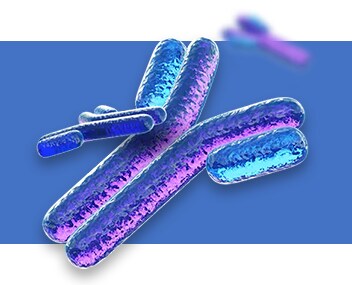
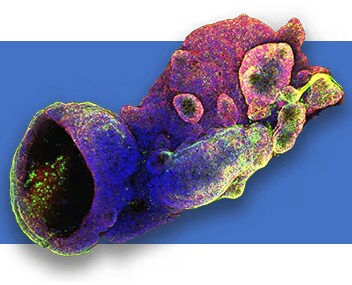










![BATF3 Antibody (841702) [DyLight 405], Novus Biologicals™](https://assets.fishersci.com/TFS-Assets/CCG/Novus-Biologicals/antibodies/Product-Image-DyLight-405.jpg-250.jpg)

